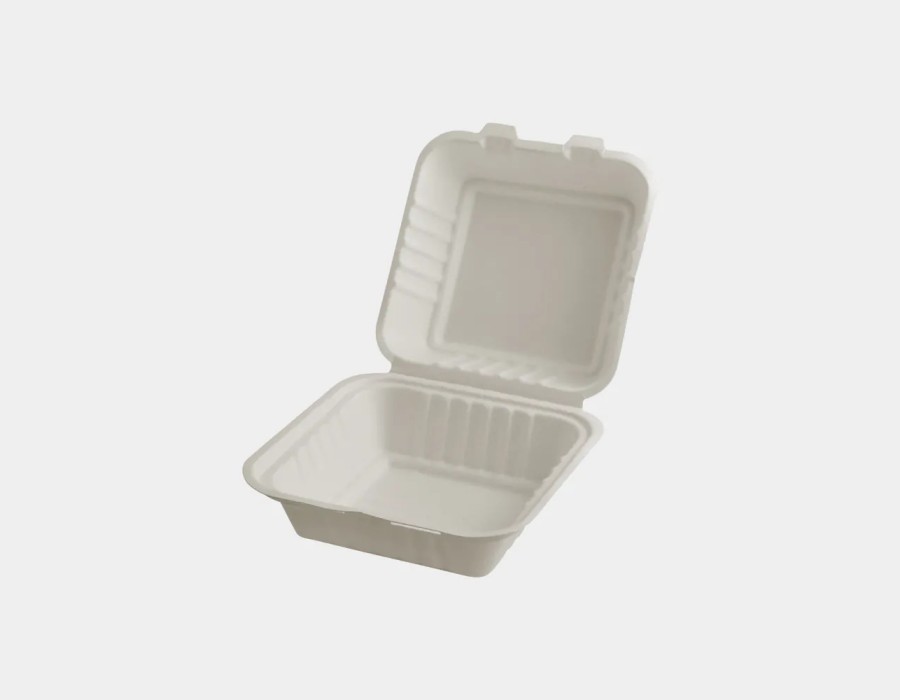The packaging industry is undergoing a significant shift toward sustainability as environmental concerns grow. Plastic waste and pollution have pushed businesses and consumers to seek eco-friendly alternatives, and sugarcane food containers are emerging as a frontrunner in this green revolution. Made from bagasse, the fibrous residue left after sugarcane stalks are pressed for juice, these containers offer a viable solution for sustainable packaging. Below, we explore why sugarcane food containers are the future of eco-friendly packaging.
Renewable Resource with a Low Environmental Impact
One of the main reasons sugarcane food containers are gaining popularity is because they are made from a renewable resource—bagasse. As a byproduct of sugar production, bagasse is abundant and otherwise considered waste. Repurposing it into food containers not only utilizes a renewable material but also reduces the need for synthetic materials like plastic.
Reduced Carbon Footprint: The production of sugarcane containers involves significantly lower greenhouse gas emissions compared to plastic packaging, making it a more environmentally friendly option.
Resource Efficiency: Sugarcane is harvested annually, making it a continuously replenishable resource. Using its byproduct reduces the environmental burden compared to oil-based plastics, which rely on finite fossil fuels.
Biodegradable and Compostable Properties
Unlike traditional plastic packaging, sugarcane food containers are fully biodegradable and compostable. This means they break down naturally without harming the environment, and in some cases, they can even be composted in industrial composting facilities.
Composting Benefits: In the right conditions, sugarcane containers decompose within 60-90 days, leaving behind no toxic residue. This compostable property helps businesses and consumers contribute to reducing landfill waste and curbing plastic pollution.
No Toxic Additives: Sugarcane containers are free from harmful chemicals and additives often found in plastic packaging. This makes them safer for the environment and reduces the risk of microplastic contamination.
Durable and Versatile for All Types of Food
One of the key concerns about eco-friendly packaging is its durability. However, sugarcane food containers are surprisingly robust and versatile. They can handle both hot and cold foods without breaking down or warping, making them suitable for a wide variety of food applications.
Heat and Cold Resistance: Sugarcane containers are heat-resistant up to 200°F and microwave-safe, allowing them to handle hot food items like soups and stews. They also perform well with cold foods, making them an all-around option for food packaging.
Leak-Proof and Grease-Resistant: These containers are naturally moisture and grease-resistant, ensuring that even liquid-based or greasy foods do not leak or compromise the packaging’s structure.
Appealing to Eco-Conscious Consumers
As consumers become more environmentally aware, they are actively seeking brands that align with their eco-friendly values. Businesses that switch to sugarcane food containers can attract these green-minded customers and stand out in the market as sustainable leaders.
Building Brand Loyalty: Offering sustainable packaging helps businesses build trust and loyalty with eco-conscious consumers. It also allows companies to market themselves as environmentally responsible, which can drive sales and enhance brand reputation.
Meeting Regulatory Demands: As governments across the globe implement stricter regulations on plastic use, sugarcane containers provide a compliant and forward-thinking solution. By adopting these eco-friendly alternatives early, businesses can stay ahead of regulations and future-proof their operations.
Supporting the Circular Economy
Sugarcane food containers fit seamlessly into the growing trend of the circular economy, which emphasizes reducing waste and reusing resources. By opting for packaging that can be composted and returned to the earth, businesses support a system that minimizes the environmental impact of consumer goods.
Closing the Loop: In a circular economy, products and materials are designed to be reused, recycled, or composted. Sugarcane containers, with their biodegradable properties, contribute to closing the loop by sustainably returning to the earth after use.
Conclusion
The future of packaging is undeniably green, and sugarcane food containers are at the forefront of this transition. Their renewable nature, biodegradable properties, durability, and consumer appeal make them a practical and sustainable choice for businesses looking to reduce their environmental footprint. By embracing sugarcane-based packaging, companies not only contribute to a cleaner planet but also align with the values of eco-conscious consumers, positioning themselves for long-term success in an increasingly sustainability-focused market.





Comments